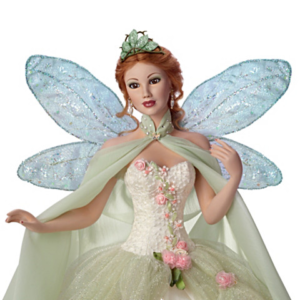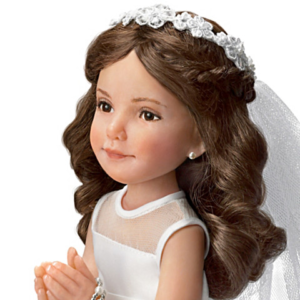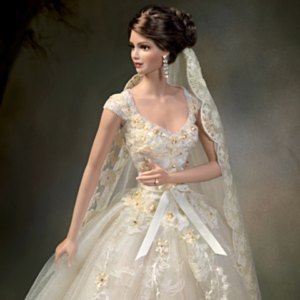In this new column, we’ll feature questions submitted by you, our wonderful readers! Our first question comes from Brenda R., who asks: “Do you think porcelain dolls will make a comeback?”
Brenda, I truly believe porcelain dolls are timeless, and demand for this art form will continue to be strong. Here at The Ashton-Drake Galleries, we use the finest bisque porcelain to craft our collectible porcelain dolls.
Bisque porcelain has been around since the 1800s, when French and German toymakers started using it to make dolls for children. After World War II, many adults sought out these bisque porcelain dolls as a reminder of their childhood. Since then, the art form has been continually refined, and is now used to create some of the finest collectible dolls in today’s market.
Bisque porcelain is a wonderful medium, because it lends a lovely smooth texture and matte finish. It also enables us to capture richness of color and subtle blends so we can achieve a very realistic effect.
Consider, for example, Sandra Bilotto’s “Titania Queen of the Fairies.” Notice the warmth of her skin tone, and the gorgeous deep plum of her lips. Look closer, and you’ll appreciate the fine detail of her hand-painted brows, lips and fingernails. Titania’s head, arms and legs are all sculpted and handcrafted in fine bisque porcelain. Titania is also unique in that you can place her head and arms in various poses to show her off in the best possible way.
Pictured below: Titania Queen of the Fairies

Bisque porcelain is a wonderfully fluid medium, which enables us to capture the finest details from an artist’s original sculpt. Cindy McClure’s award-winning “A Love So Precious” bride doll is a lovely example of this. Her slender neck, delicate throat, strong arms and dainty hands are perfectly captured in the finest bisque porcelain, and every exquisite detail is visible right down to the intricate features of the engagement ring on her left hand.
Pictured below: A Love So Precious
Bisque porcelain is also very versatile. It can portray the striking cut of high cheekbones or the defined ridge of a sharp nose, but it can also capture the innocence of a child’s face. To illustrate this, consider Jane Bradbury’s “My First Holy Communion” child doll, who just shines with sweetness. From her big brown eyes, softly blushed cheeks and button nose, every detail of this important moment is reflected in this precious doll.
Pictured below: My First Holy Communion
I hope that helps answer your question, Brenda! Thanks for reaching out to us.
If you have a question, I’d love to hear from you! Feel free to drop me a quick email, comment below or tag us in any of your social media channels with #AshtonDrake.





